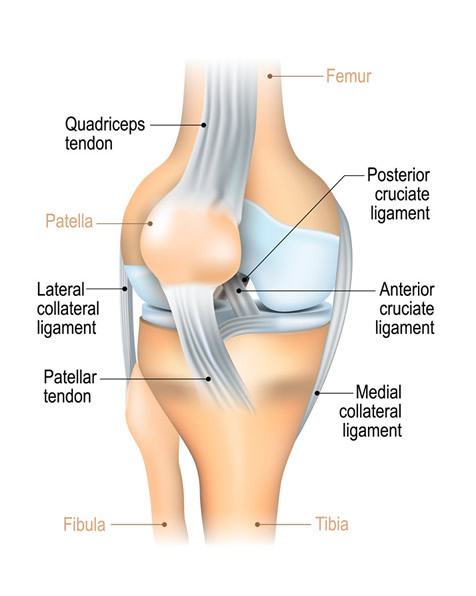
Multiligament Injuries
Ligaments are elastomeric tissue belts that attach bones to one another and give the joint balance and sturdiness. The knee joint is a complex joint with a total of 4 major ligaments. These are as follows:
- Tibial Collateral or Medial Collateral Ligament
- Fibular Collateral or Lateral Collateral Ligament
- Anterior Cruciate Ligament
- Posterior Cruciate Ligament
- Transverse Meniscal Ligament
- Ligamentum Patellae
- Oblique Popliteal Ligament
- Arcuate Popliteal Ligament
- Meniscofemoral Ligament – 2 in number
- Popliteofibular Ligament
One total cruciate tear (grade iii), along with a partial or entire collateral tear (grade ii or iii), or a partial or entire tear of another cruciate (grade ii or iii), are all considered A Multiple Ligament Knee Injury.
The knee becomes unsteady when the cruciate and collateral ligaments break separately (rare) or together (often).
Sometimes the anterior cruciate ligament, medial collateral ligament and medial meniscus are injured together. This triad of injury is called the terrible triad of the knee.
The concept of Multiple Ligament Knee Injury comprises a wide range of ligament and intra-articular injury patterns. These complex wounds demand a structured method to care and diagnosis. Thus visit Kapadia Multispeciality Hospital for appropriate guidance and solution.
Symptoms of Multiligament Knee Injuries
The degree of the damage has an impact on the symptoms. They consist of:
- A jarring popping sound is made when injured
- An enlarged knee
- A feeling of joint instability in the knee
- Potentially abrupt and intense knee pain
- Aches and pains when putting pressure on the damaged knee
Diagnosis of Multiligament Knee Injuries
The doctor at Kapadia Multispeciality Hospital will establish the diagnosis by physical examination of the knee joint and its mobility. Our doctor may order an x-ray to rule out a fracture and an MRI to identify the injured ligaments.
Treatment
Management strategies for these multifaceted injuries attempt to balance the restoration of stability with the maintenance of function through the merging of operative and non-operative means.
The operative methods include:
- Repair in Fresh Cases
- Reinforce Old Lax Ligaments
- Reconstruct Old Torn Ligaments
Non-operative treatment is usually indicated for partial (grade ii) ligament tears and occasionally for initial treatment in special circumstances.
Following are some examples of early medical care for knee ligament damage:
- Sleep
- Use of ice packs (to minimize soreness that happens during the injury)
- Contraction (preferably via a band of elastic)
- Elevation
- Pain Relievers
Most Multiple Ligament Knee Injuries might require surgical management. In this injury management the most important decision is which ligament injuries to be treated first and whether all the ligament injury reconstruction/repairs can be performed in a single stage or the procedure needs to be staged. Another important consideration is the timing of the surgery. It is generally prudent to wait three to six weeks after the first injury for the knee to stop hurting, for the inflammation to go down and to determine the true degree of the harm.
Indications of early surgical intervention include associated knee dislocations/subluxations, patellar tendon ruptures/avulsions or associated large meniscus tears.
In order to prevent post-traumatic arthritis, the eventual aim of treatment is to help the patient resume their pre-injury profession or activities.
To know more kindly contact the best orthopaedic surgeon Dr. Rahul Modi for further queries.
This surgery is frequently performed by the best orthopaedic surgeon Dr. Rahul Modi for treating Multiligament Injuries EDT.